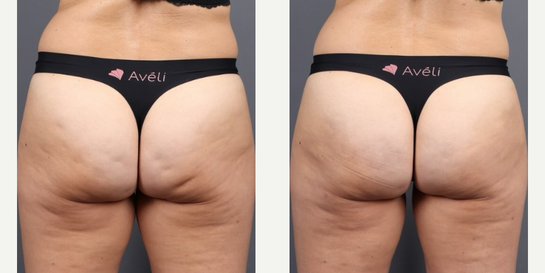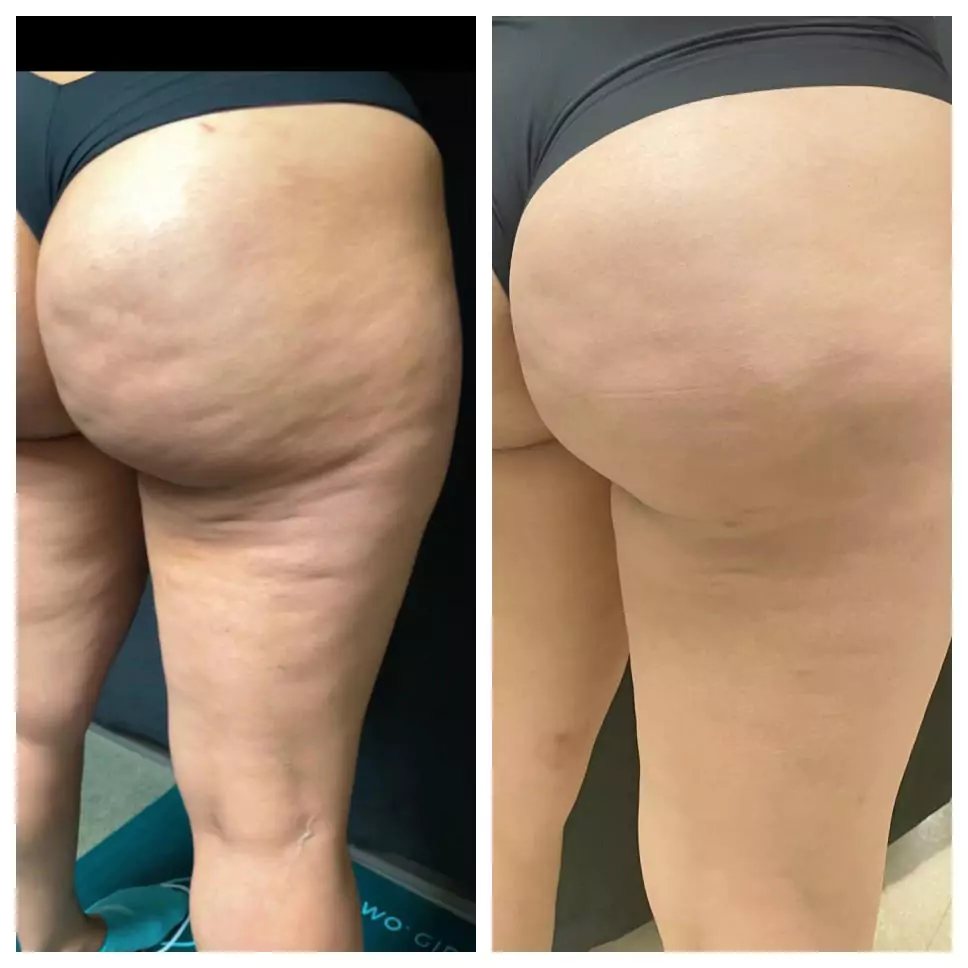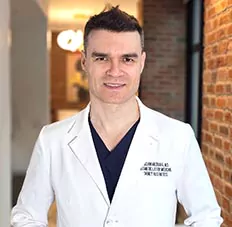Top 10 Cellulite Treatments That Actually Work: Your Ultimate Guide
Cellulite is a common skin condition that affects up to 90% of women at some point in their lives, regardless of age, fitness level, or body weight. Characterized by dimpling and uneven texture, cellulite occurs when fat deposits push through connective tissue beneath the skin. While not harmful, cellulite can be a source of frustration for those seeking smoother, more even skin.
The market is flooded with products and treatments promising miraculous results, but not all solutions are effective. In this guide, Dr. Schwarzburg curated the Top 10 Cellulite Treatments That Actually Work, based on clinical studies, patient satisfaction, and real-world results. From non-invasive therapies to minimally invasive procedures, discover what really delivers smoother, firmer skin.

1. Avéli™
Avéli™ is the latest FDA-cleared, minimally invasive treatment specifically designed to address cellulite. It works by precisely targeting and releasing the fibrous septa bands that cause the dimpling effect of cellulite. Using a small handheld device, your practitioner can manually locate and release these bands for immediate and lasting results.
- Effectiveness: Immediate improvement with long-lasting, near-permanent results.
- Downtime: Minimal; minor swelling and bruising may occur.
- Cost: $3,000 – $6,000 per treatment.
- Ideal Candidates: Those with moderate to severe cellulite who want a single, effective treatment.

2. Laser Treatments (e.g., Cellulaze®)
Laser treatments like Cellulaze® are among the most effective options for cellulite reduction. This minimally invasive procedure uses a laser fiber inserted under the skin to break down the tough bands causing cellulite, release trapped fat, and stimulate collagen production.
- Effectiveness: Noticeable improvement after one session; results last 1-2 years.
- Downtime: 1-2 days of minor swelling or bruising.
- Cost: $3,500 – $6,000 per treatment.
- Ideal Candidates: Those with moderate to severe cellulite and good skin elasticity.
3. Acoustic Wave Therapy
Acoustic Wave Therapy (AWT) uses sound waves to break up fibrous bands and improve blood flow, enhancing skin texture and elasticity. This non-invasive treatment requires multiple sessions for optimal results.
- Effectiveness: Visible reduction after 4-6 sessions.
- Downtime: None; it’s a quick, painless procedure.
- Cost: $200 – $500 per session.
- Ideal Candidates: Individuals with mild to moderate cellulite who prefer a non-invasive approach.
4. Subcision (e.g., Cellfina™)
Subcision, often performed using the Cellfina™ device, is a minimally invasive procedure that releases the fibrous septae under the skin that causes dimpling. It offers long-lasting results with a high patient satisfaction rate.
- Effectiveness: Results last up to 3 years or more.
- Downtime: Mild bruising for up to 2 weeks.
- Cost: $3,000 – $5,000 per session.
- Ideal Candidates: Those with deep, persistent dimples.
5. Vacuum-Assisted Precise Tissue Release
This technique uses small blades to release the fibrous bands under the skin, allowing the treated area to bounce back and fill in, reducing the appearance of cellulite. It provides long-term results with minimal downtime.
- Effectiveness: Results can last 2-3 years.
- Downtime: Mild swelling or bruising for a few days.
- Cost: $4,000 – $7,000 per treatment.
- Ideal Candidates: Patients with severe cellulite or multiple dimples.
6. Radiofrequency Treatments (e.g., Secret RF)
Radiofrequency (RF) treatments like Secret RF microneedling use heat energy to stimulate collagen production, tighten the skin, and reduce the appearance of cellulite. It’s non-invasive and offers gradual, natural-looking results.
- Effectiveness: Improvement after 4-8 sessions.
- Downtime: None; it’s a comfortable, no-downtime treatment.
- Cost: $700 – $1000 per session.
- Ideal Candidates: Those seeking a non-surgical approach with skin-tightening benefits.

7. Cryolipolysis (CoolSculpting®)
CoolSculpting® is primarily known for fat reduction but can also be effective in improving the appearance of cellulite by reducing the fat layer beneath the skin. It’s non-invasive and uses controlled cooling to freeze and eliminate fat cells.
- Effectiveness: Gradual reduction of cellulite over 2-3 months.
- Downtime: None; minor soreness or numbness possible.
- Cost: $750 – $1,500 per area.
- Ideal Candidates: Individuals with pockets of stubborn fat contributing to cellulite.
8. Topical Creams and Lotions
While many over-the-counter creams promise to reduce cellulite, only those containing active ingredients like caffeine, retinol, or peptides can offer temporary improvement by tightening the skin and increasing blood flow.
- Effectiveness: Temporary smoothing effect.
- Downtime: None; daily application needed.
- Cost: $30 – $150 per product.
- Ideal Candidates: Those looking for a low-cost, temporary solution.
9. Massage and Lymphatic Drainage
Techniques like lymphatic drainage massage can help reduce fluid retention and improve blood flow, temporarily diminishing the appearance of cellulite. Regular sessions are needed for sustained results.
- Effectiveness: Temporary improvement after each session.
- Downtime: None; relaxing and beneficial for overall skin health.
- Cost: $100 – $250 per session.
- Ideal Candidates: Anyone looking for a holistic, non-invasive option.
10. Diet and Exercise
Maintaining a healthy diet and consistent exercise routine helps reduce overall body fat and tones muscles, which can minimize the appearance of cellulite. While it’s not a standalone solution, it complements other treatments effectively.
- Effectiveness: Gradual improvement over time.
- Downtime: None; part of a healthy lifestyle.
- Cost: Varies based on diet and exercise program.
- Ideal Candidates: Anyone committed to a healthy lifestyle.
FAQs About Cellulite Treatments
What is the most effective treatment for cellulite?
Avéli™ and laser therapies like Cellulaze® offer the most effective and long-lasting results for cellulite reduction.
Are the results of cellulite treatments permanent?
While some treatments, like Aveli, offer long-lasting results, no solution is entirely permanent. Maintenance sessions may be needed.
How many sessions do I need to see results?
The number of sessions depends on the chosen treatment. Non-invasive options may require 4-8 sessions, while minimally invasive procedures like Avéli™ often need just one.
Can cellulite be prevented?
While cellulite can’t be entirely prevented, maintaining a healthy diet, regular exercise, and a proper skincare routine can help minimize its appearance.
What is the cost range for professional cellulite treatments?
Prices vary widely, from $200 per session for massages to $6,000 for advanced procedures like Avéli™.
Start Your Journey to Smooth, Dimple-Free Skin Today
Cellulite can be tough to tackle, but with the right approach, you can achieve noticeable, long-lasting results. At Skinly Aesthetics in New York, Dr. Schwarzburg specializes in offering the most advanced, effective cellulite treatments tailored to meet your individual goals. Whether you’re dealing with stubborn dimples or looking for a smoother overall texture, our expert team is here to guide you every step of the way. Book your consultation today by calling 212-774-4264 and take the first step towards revealing firmer, more radiant skin that you’ll love to show off.
 info@skinlyaesthetics.com
info@skinlyaesthetics.com  212-774-4264
212-774-4264 
